Doug Nye finds all-American treasure in the Revs Digital Library
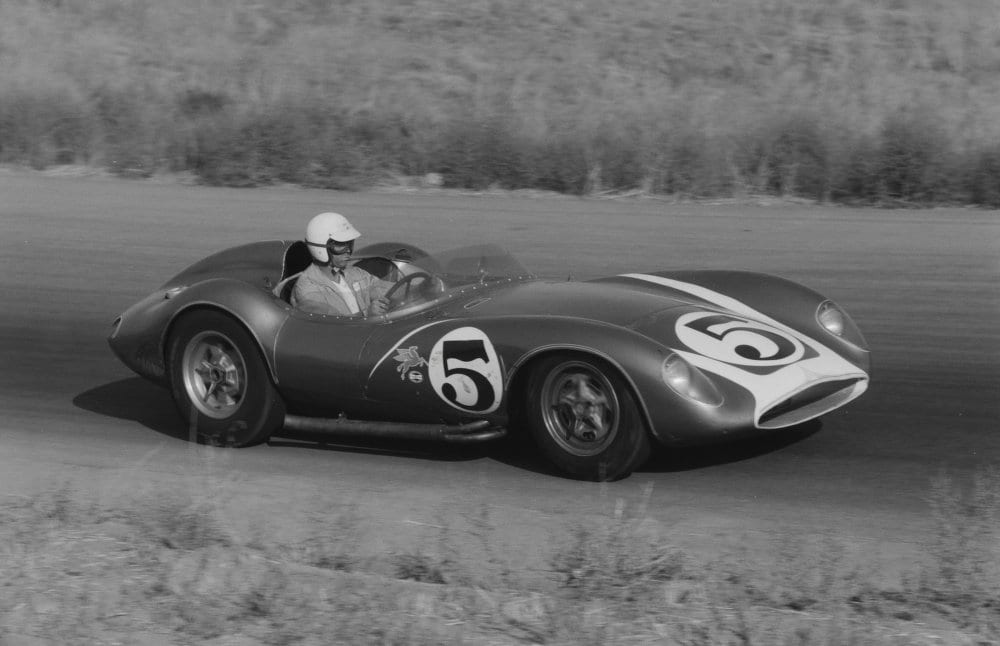
For many of us who have been involved in or who have followed the Formula 1 World Championship series for many years – in my case, as far as I can clearly recall, since as early as 1951-52 – the recent United States GP at Austin proved to be a real classic. We have waited for many years to see Formula 1 make a worthwhile impact upon the American sporting psyche. It’s clearly got a way to go right now, but at least the hectic and dramatic events at Austin made pretty darned good motor racing TV.
Now within the Collier Collection there stands preserved the only identifiably American World Championship Grand Prix-winning car we have so far seen – Dan Gurney’s gorgeous, glorious 1967 Belgian GP-winning Eagle-Weslake V12. It just has to be perhaps the best-proportioned, most handsome Formula 1 car of all time – arguably challenged, so far as my taste is concerned by only the Jim Clark-era Lotus-Climax 25/33 family of the 1960s, the original Yardley-liveried BRM P160 ‘chisel-nose’ of 1971, and maybe the black-and-gold John Player Lotus-Cosworth 79 which carried Mario Andretti to his 1978 Formula 1 Drivers’ World Championship title.
But there was, of course, an earlier all-American Formula 1 car program which tried to take on the road racing establishment – but failed. This was Woolworths heir Lance Reventlow’s Scarab venture. The young zillionaire with his film-star good looks and gilded life-style had spent the summer of 1957 in Europe, racing a 2-litre Maserati and Formula 2 Cooper-Climax prepared for him by Warren Olson, who had a modest race shop in West Hollywood. Reventlow’s driving prowess didn’t impress his European hosts. He flipped the Maserati at Snetterton – perhaps England’s least attractive race circuit – and then he was joined on that side of the Atlantic by fellow-American youngster Bruce Kessler. Reventlow had been smart enough to realise that in motor racing one can make one’s own luck, and at the wave of a wand using a better car could convert a makeweight driver into a front-runner. Reventlow and Kessler visited the pokey little Lister factory in Cambridge, England, eager to see where the standard-setting Lister-Jaguar sports-racing car was being built. Lance was unimpressed, Bruce bewildered by the Victorian-style agricultural workshop they saw. As they left Reventlow declared flatly “That thing’s a piece of junk” – Kessler, bemused, suggested they could build a better one – and so Reventlow Automobiles Inc was born.
The new company was incorporated in August 1957, and Warren Olson became its first employee. He assembled a team of gifted hot-rodders, including fabricators Dick Troutman and Tom Barnes, mechanic/driver Chuck Daigh, engine specialists Jim Travers and Frank Coon (later famous as the principals of Traco Engineering)…and then added fabricator Phil Remington and British-born racer/engineer Ken Miles. More great names followed, and RAI became a cutting-edge force in American road racing. After five months intense work, the first small-block Chevrolet V8-engined RAI sports-racing car shattered the lap record at Willow Springs – and Reventlow had chosen for it the name ‘Scarab’.
Might I at this point just suggest that you log onto the Revs Digital Library, here: https://library.revsinstitute.org/digital/ – and type ‘Scarab’ in the search facility box.
 Thirteen pages of thumb-nail images are then displayed, and amongst them you will find such glorious images as: https://library.revsinstitute.org/digital/catalog/yt010xc4477
Thirteen pages of thumb-nail images are then displayed, and amongst them you will find such glorious images as: https://library.revsinstitute.org/digital/catalog/yt010xc4477
In which photographer William Hewitt captured Chuck Daigh’s winning team car in the 1958 ‘Los Angeles Times’ Grand Prix at Riverside. Home-grown Chevrolet V8 power in a home-grown lightweight, good-handling, well-braked chassis provided American road-racing with a potentially world-beating product – had Reventlow’s little team only taken the project abroad. Until that time the way to win in US road racing was to import some European exotica from Ferrari or Maserati, or maybe something hard-bitten, down-to-earth and entirely practical as a purebred racer from Cooper, Lister or Jaguar in England. Now RAI and their Scarab-Chevrolet had kicked down the bar-room door, and burst in to spoil the imports’ party.
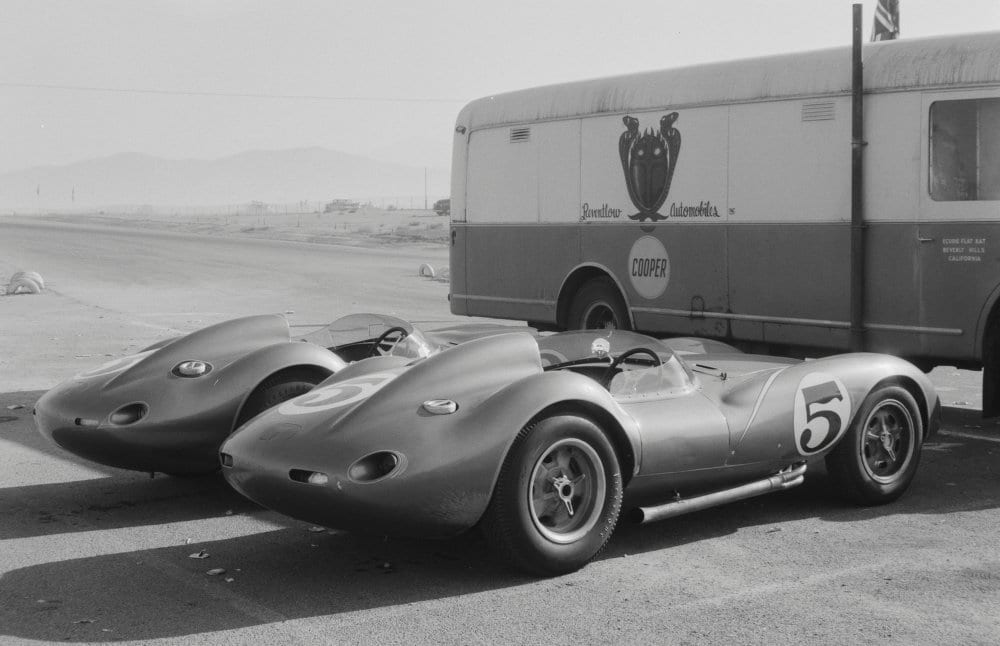
Browsing further through the Digital Library fabulous historic record, you’ll find this:
https://library.revsinstitute.org/digital/catalog/zj191cj7363
showing Chuck Daigh’s and Lance Reventlow’s twin Scarab sports cars parked beside RAI’s soon-famous Scarab-emblazoned Fiat-Bartoletti transporter. This historic vehicle alone would go on to serve Shelby American, then Alan Mann Racing for their Cobra and Ford GT programmes in Europe – and it still survives today.
Having blown-away the best imported sports cars that money could buy, Reventlow and his talented team contemplated taking down the Europeans’ pants in Formula 1. With veteran Miller and Offenhauser design engineer Leo Goossen engaged, they created a Formula 1 contender which might indeed have stood a truly competitive chance had it only made its racing debut in 1958 or ’59. But instead the Formula 1 Scarab’s development dragged, and RAI’s team did not make their entry into Formula 1 until the Monaco Grand Prix of 1960.
They then faced two big problems. Many technical compromises had been made to put two cars in the pit lane there for the beginning of practice and qualifying. They were undeveloped, and would prove unreliable. Worse – their basic concept had been overtaken, for these front-engined ‘roadster’-type cars had been consigned to immediate obsolescence by the emergence of the latest rear-engined Formula 1 designs from Cooper, Lotus, BRM and even – struggling and screaming in protest – from Ferrari.
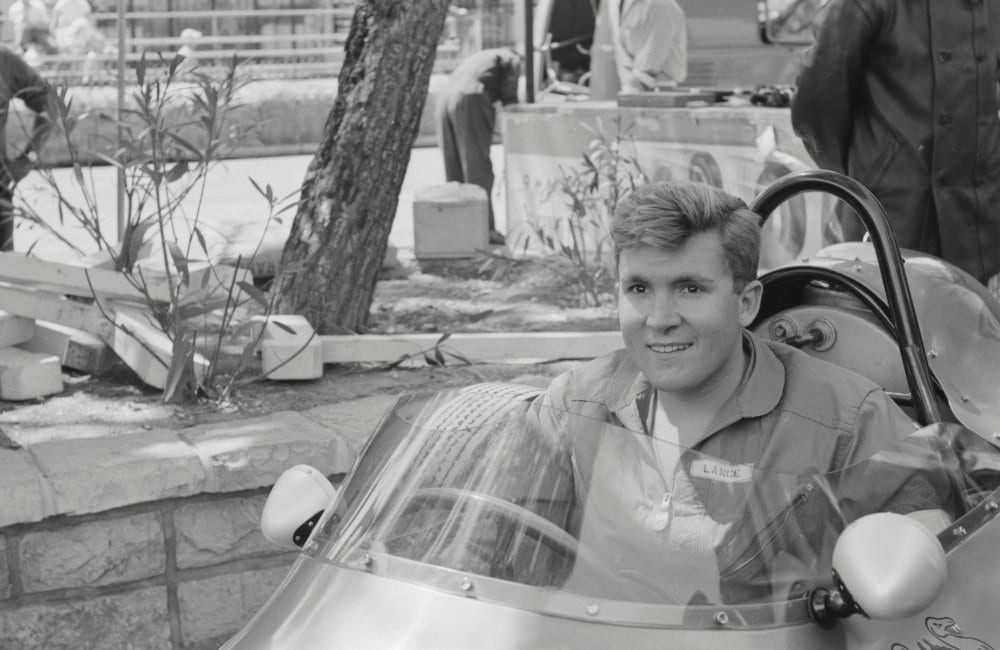
Here, before first practice in the Monte Carlo pits, is Lance Reventlow – full of eager anticipation upon his new marque’s Formula 1 debut:
https://library.revsinstitute.org/digital/catalog/yc718yd9190
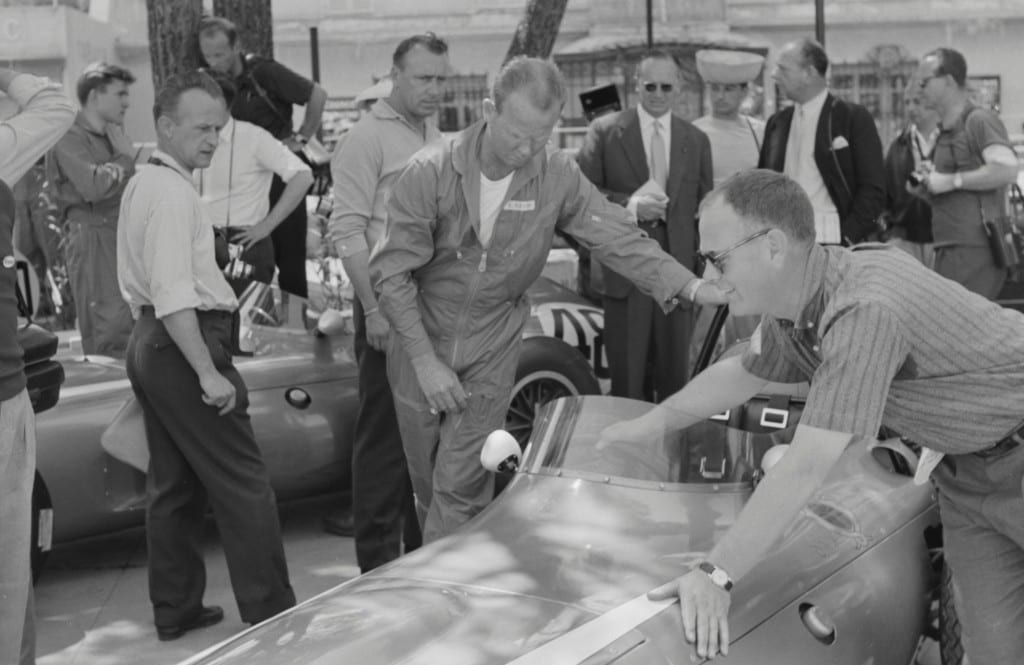
Here, https://library.revsinstitute.org/digital/catalog/gg433bq9858 team driver and mechanic Chuck Daigh, in his racing suit, looks distinctly less optimistic, while Warren Olson pushes the second car forward (right foreground).
For the subsequent Belgian Grand Prix on the superfast road circuit at Spa, the fuel-injected Scarab’s 4-cylinder engine bawl electrified all onlookers, but not so its lap times. Chuck Daigh here is just missing the apex on the Raidillon hill at Eau Rouge corner. He would then try kicking the car tail-out at 130mph, but when it hit a bump just past the marshal seen here it would wav its inside front wheel high above the track surface and career out of sight over the brow. Soon that marshal would be anticipating such a huge accident that every time he saw the metallic-blue Scarab approaching he’d wav his yellow flag regardless…
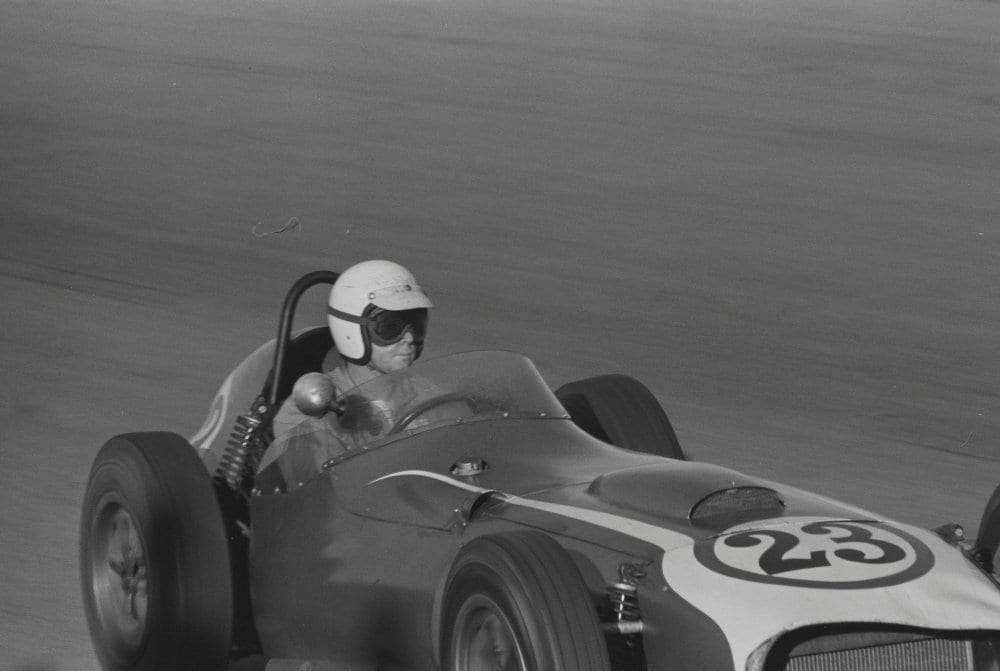
But the RAI Scarab team’s Formula 1 foray soon proved an expensive disaster. They retreated home, and made just one final World Championship-level appearance in the 1960 United States round at Riverside, Chuck Daigh making it to the finish flag – see here: https://library.revsinstitute.org/digital/catalog/yd901hn0833– but five laps behind Stirling Moss’s winning rear-engined Lotus-Climax 18.
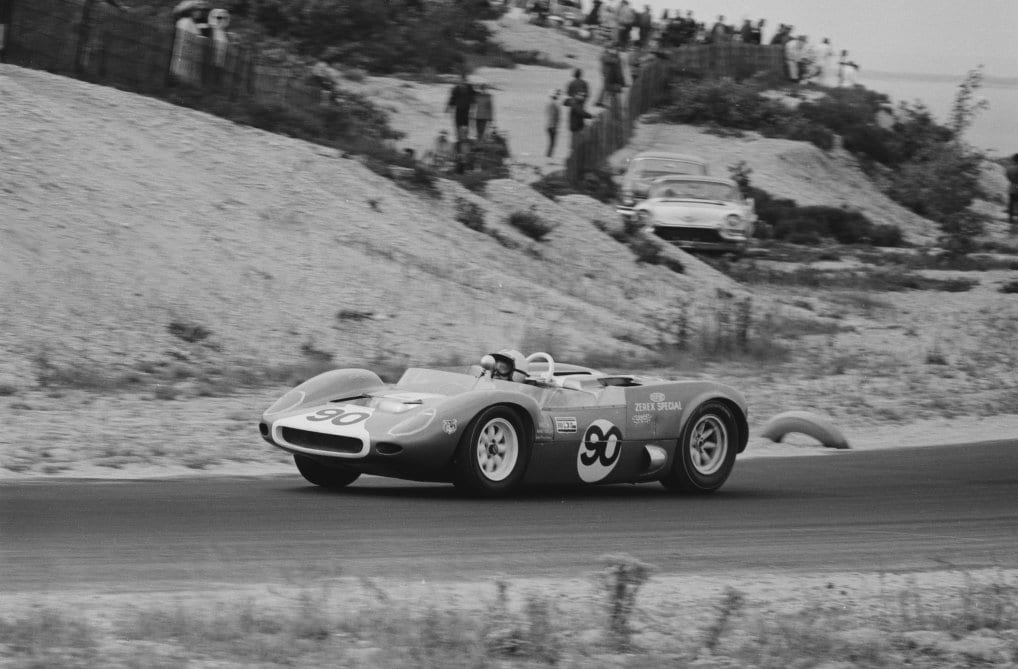
One front-engined Scarab returned to contest minor British InterContinental Formula 3-litre races in 1961. A rear-engined sports Scarab – as seen driven by Walt Hansgen, here: https://library.revsinstitute.org/digital/catalog/yv304zb6136 and a rear-engined InterContinental/Tasman chassis with Buick V8 engine provided the tailpiece to this story, before Lance Reventlow’s consistently loss-making racing car venture was likely to become re-classified by the IRS as a hobby rather than a business, no longer qualifying for assorted tax write-offs. In January 1962 RAI began laying-off staff, and its last official outing followed at that year’s Nassau Speed Week in the Bahamas.
But the last laugh would belong to America’s favourite front-engined Grand Prix car as in the 1980s Vintage racer Don Orosco began campaigning one of the three Formula 1 cars constructed, took it into the heart of the British Historic racing scene, and won with it. When he did much the same with one of the team sports-racing cars – the international Historic scene really sat up and took notice. And today the Scarabs are fully established as truly exotic regular front-runners and potential race-winners, no matter how wide the bodywork they wear…

